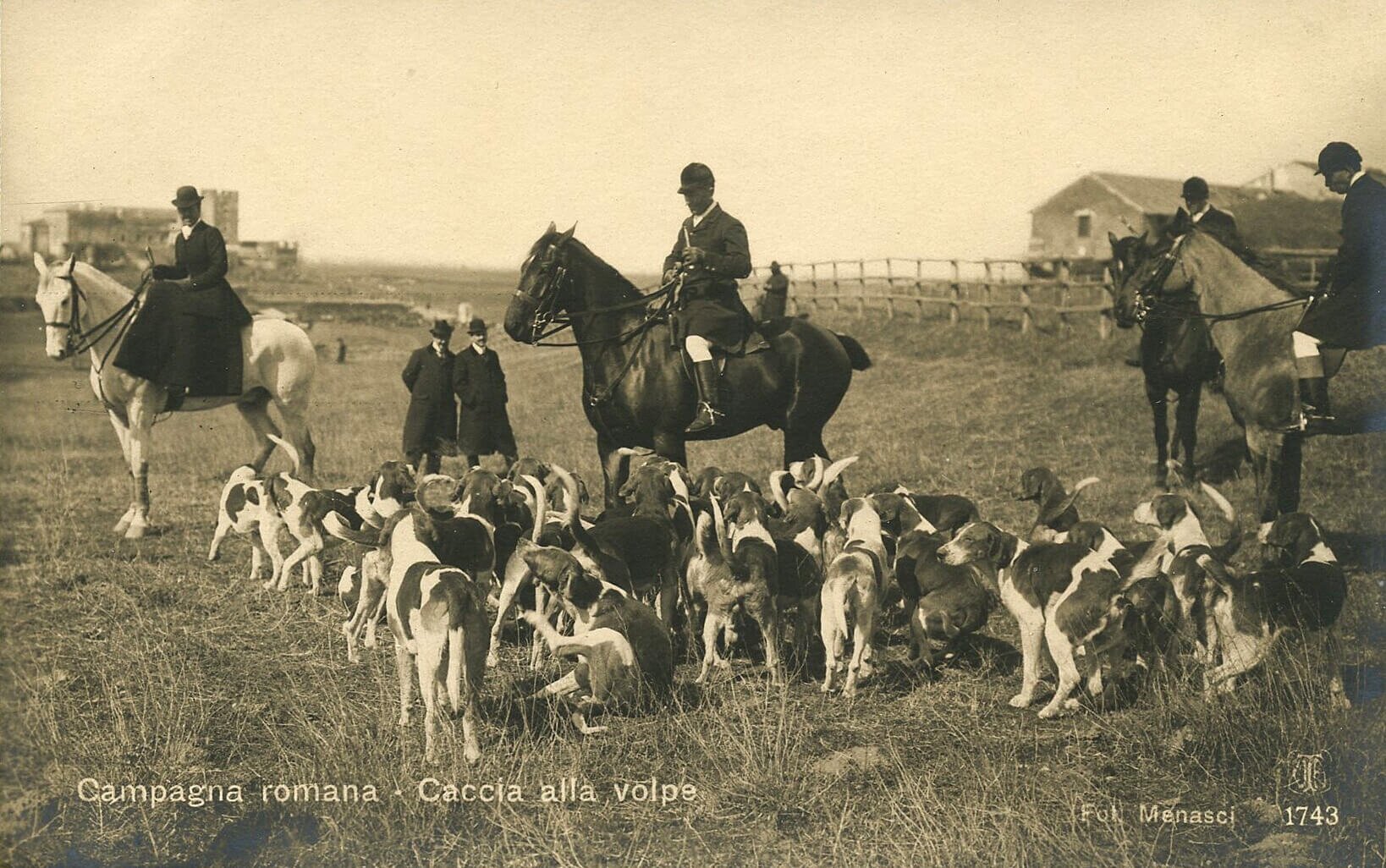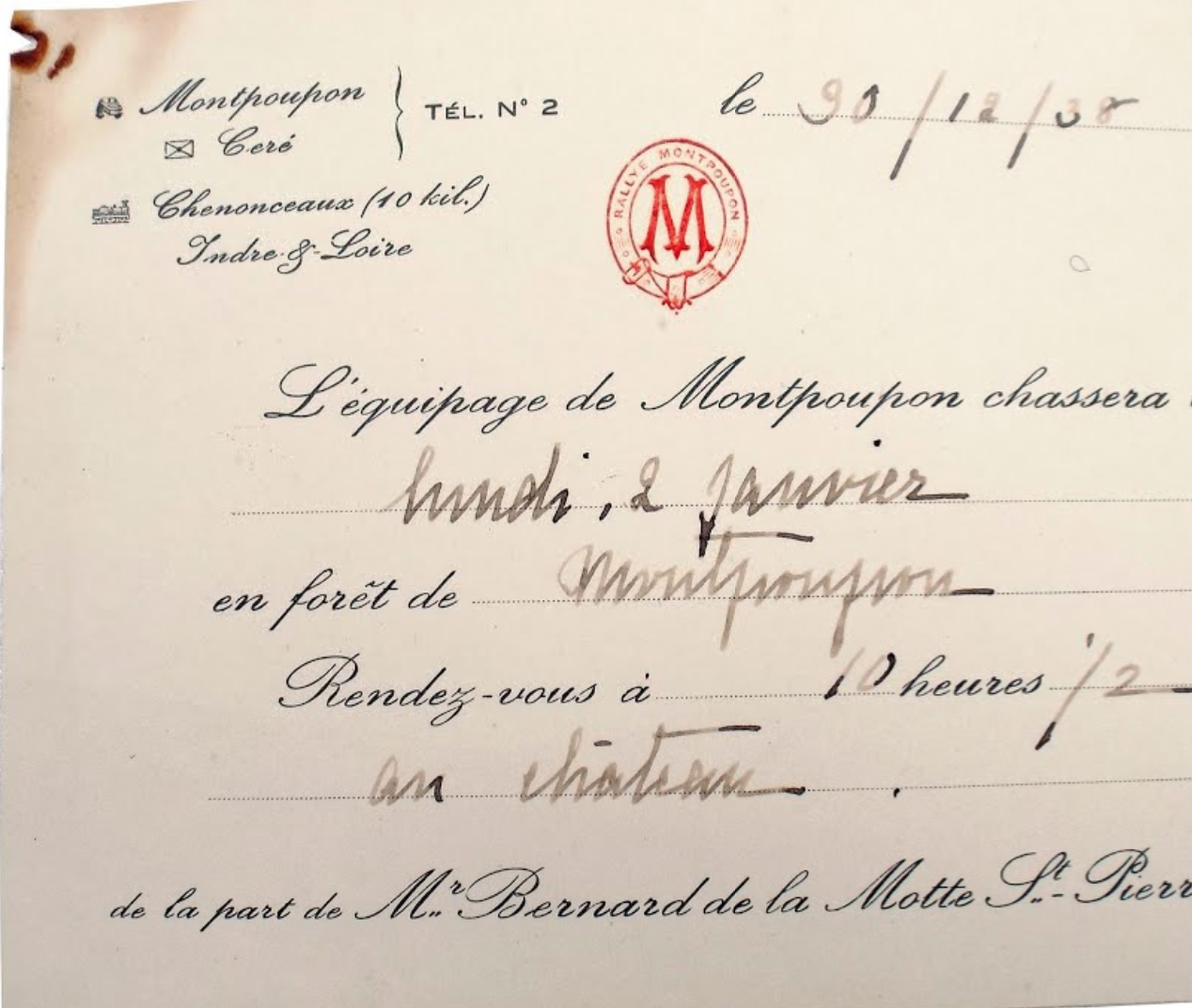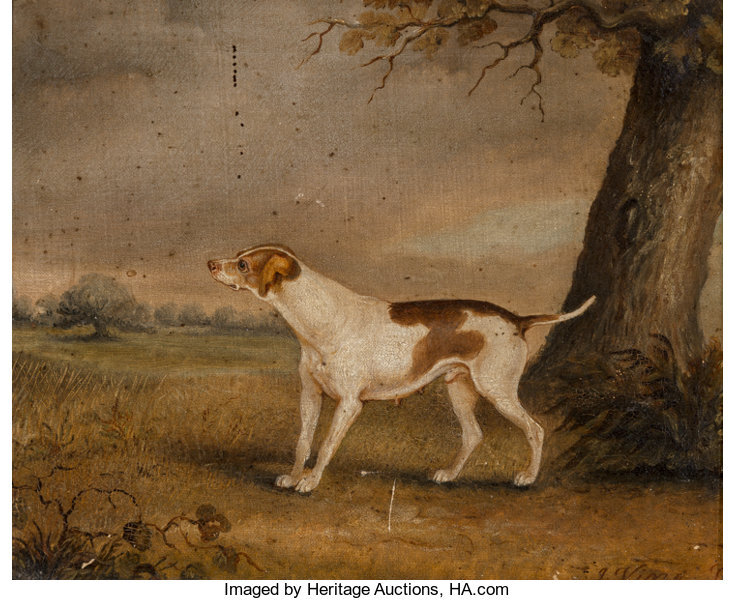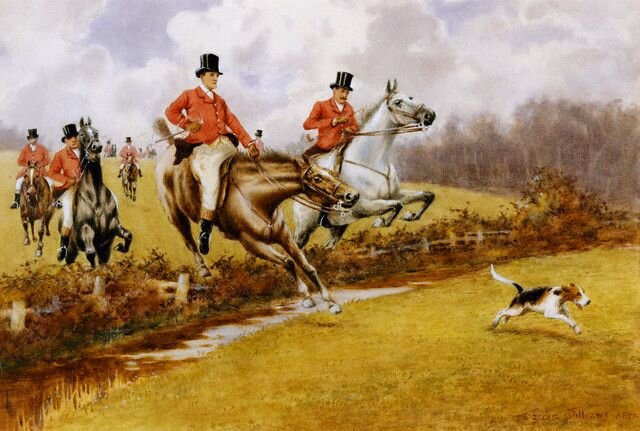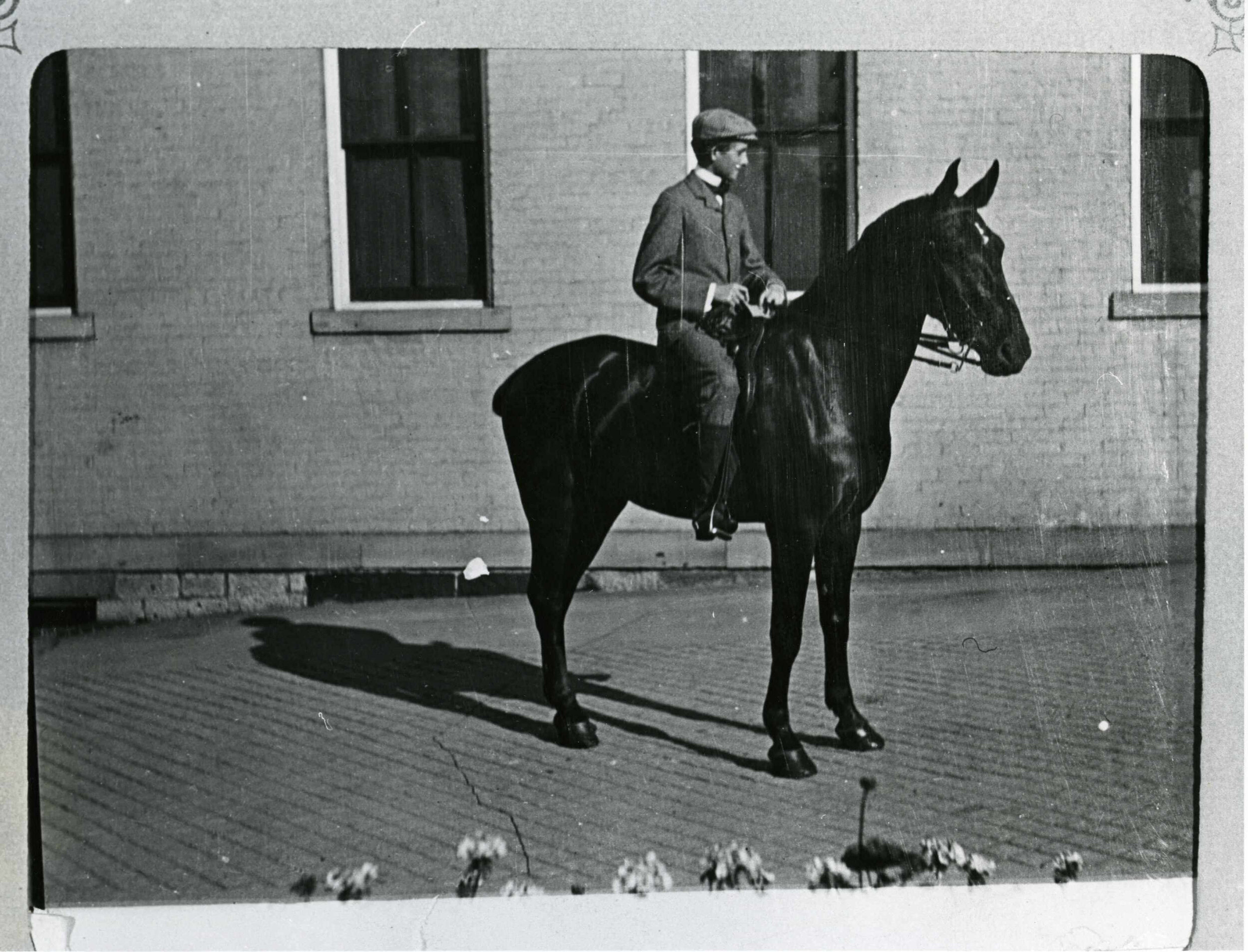European Hunting Clothing & Culture Through the Ages
For the past couple of years, I have been intrigued by pre-1980s hunting culture. Despite what many people think, there actually are other hunting cultures in North America aside from Rednecks.
I love being outdoors, I love the mountains and I love dogs. My favorite type of hunting is pheasant hunting because it occurs during the fall and you don’t have to wear camouflage.
I happened to be in a Fashion History college course when I went pheasant hunting for the first time, and I was inspired to do a quick little research article on the history of hunting clothing and style.
Types of Hunts
Fox hunting began in England when farmers and landowners would go on hunts to get rid of foxes because they were considered pests. This evolved into a popular sport that eventually became reserved for the royal and wealthy.
“Fox hunting is an activity involving the tracking, chase and, if caught, the killing of a fox, traditionally a red fox, by trained foxhounds or other scent hounds, and a group of unarmed followers led by a "master of foxhounds" ("master of hounds"), who follow the hounds on foot or on horseback.[1]”
Bird Hunting: Includes Ducks, Geese, Pheasant, Quail, Partridge.
Hunting as a Sport
Hunting was formerly a sport reserved for royal blood but eventually, it spread and became a popular sport across Europe after income restrictions were removed. Men and women would participate in hunts, “Princess Frederika of Eisenach was known for her deer-stalking skill. Maria, governess of the Netherlands, could track a stag, shoot it with a crossbow, and gut it. In France, Diana de Poitiers, with her paramour Henry II (ruled 1547–59), hunted stags, roe deer, and boar from the saddle at Chenonceaux…and in England, Elizabeth I was fond of both hunting and hawking.” [2] When Europeans began to settle in Africa, safari hunting also became famous and would last several weeks and usually was carried out with automobiles instead of horseback.
Many wealthy families would have hunting lodges for hunting expeditions and trips with their families. Some of these places could be close to their property or in different parts of the country. Fox hunting was not only performed in the field but reflected in the hunters’ lodges, clubs, and interiors. “A carefully chosen ‘sporting assemblage’ of sporting art, sportsmen’s libraries, taxidermy, and hunting objects formed the stage on which the huntsmen chose to perform.”
Cultural Depiction Gallery
Hunting Attire
Tweed was the choice fabric for hunting pants because it prevented snags on trees and bushes. Ideally, these pants would be worn with tall brown or black boots with matching garter straps that attached to buttons on the front of the breeches. A black or dark navy coat made of melton cloth (wool in a twill weave) was considered to be most proper and good for wet or cold weather. Regulations for colors of pants, jackets, and hats became more relaxed over time and or began to have more exceptions. For example, white pants and are only deemed acceptable with a red coat or when wearing a dove grey velvet cap.
Women’s Jackets that were specifically for hunting on horseback would need to be long enough to break on the back of the saddle. Short Jackets also are known as a “bum freezer” jacket was considered unflattering on women. Red was not to be worn on a hunt until the hunter has been hunting for five years or was invited to do so, in some European countries wearing red during hunting was prohibited. Hats for women were commonly velvet bowler hats, and gentlemen would wear a top hat or a velvet cap.
Antique Hunting Clothing Gallery
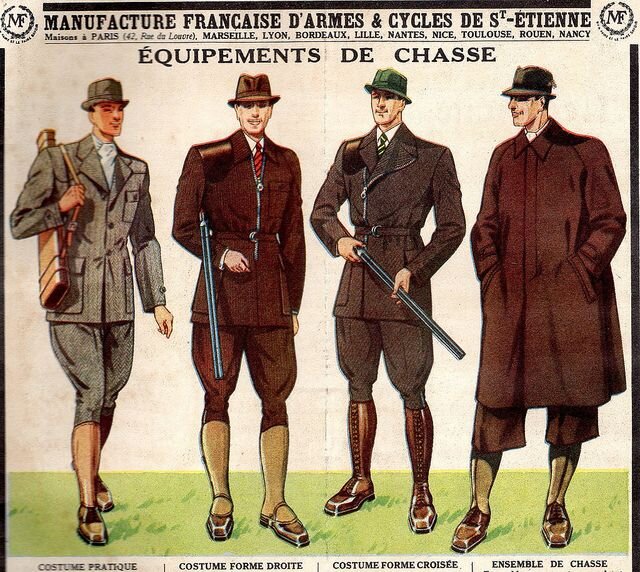
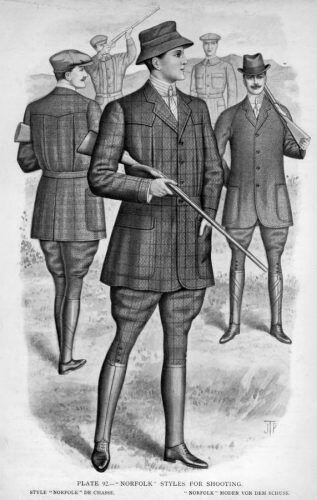
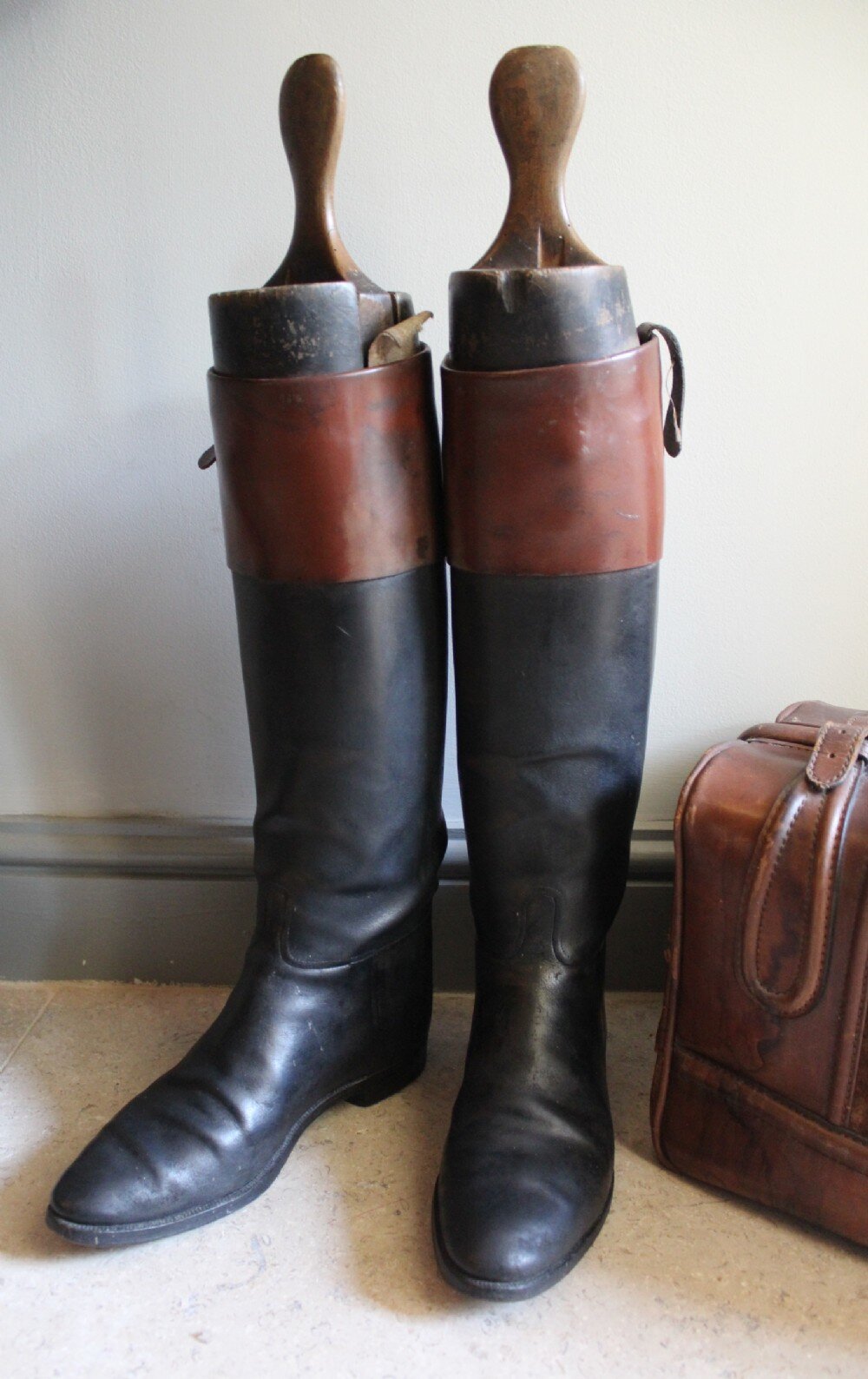

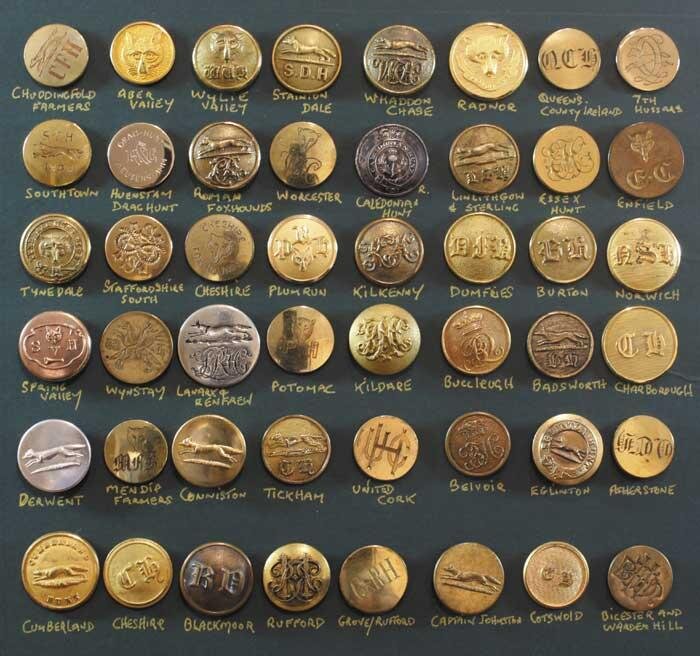
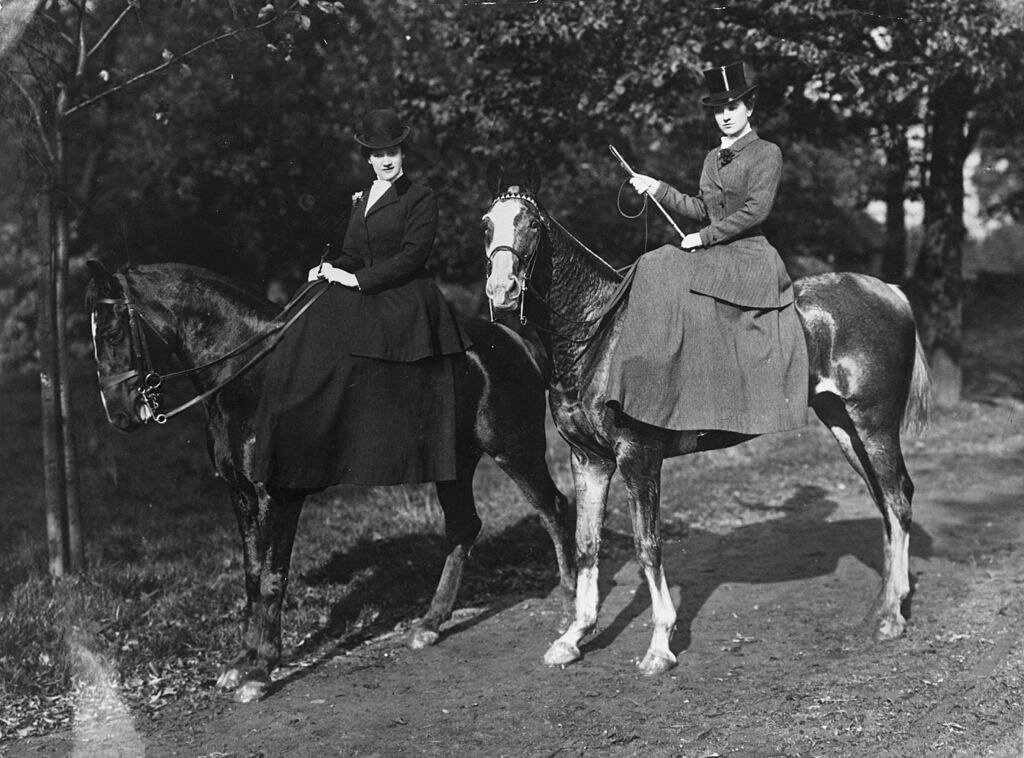
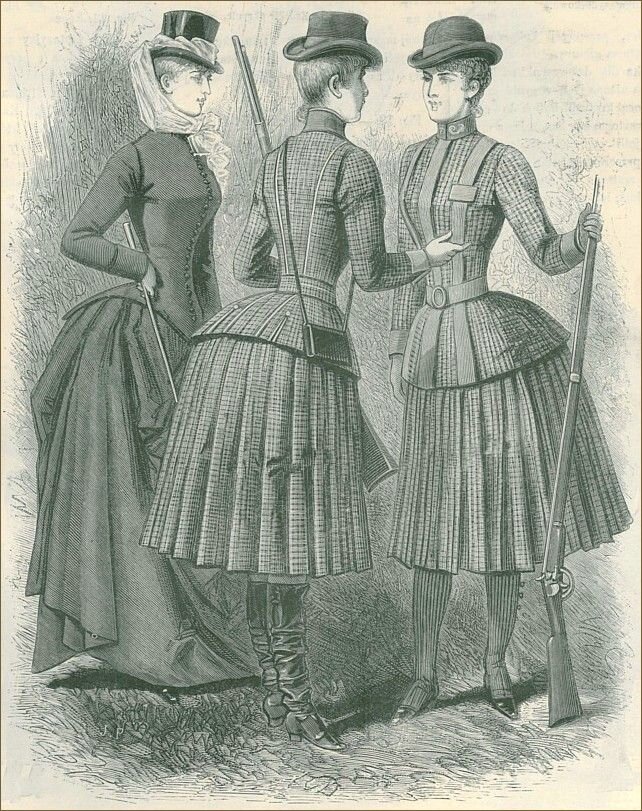
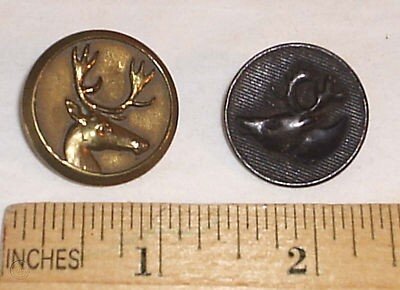
Hunt Buttons
My favorite discovery while researching this topic was hunt buttons. The closures of typical hunting jackets were often two or three black horn buttons, however, hunting buttons or sporting buttons were worn by elite hunters and club members. Hunt buttons were first worn on the coats and jackets of royal hunting gentlemen around the 1800s and by the turn of the century, they became popular among hunt clubs, wealthy families, landowners that hosted hunts on reserves, and royalty. These hunting buttons sometimes had a signature coats of arms, monogrammed initials, and sometimes a depiction of an animal for a specific hunt or location. These buttons started to become a tradition and many other countries including Germany, Ireland, America, Canada, and more. “Shooting parties were exclusive and extravagant weekend-long events. Select friends and acquaintances were invited to join the hunt, providing an opportunity to discuss business while demonstrating their prowess in the field. These honored guests brought their best-trained gun dogs, were proficient marksmen, and dressed in their finest sporting attire.” It’s been difficult to research this specific niche because there isn’t much credible information on the internet, the best website I found to learn about the topic is huntbutton.com. Now, whenever I am antique shopping I ask the shop if they have any hunt buttons. I hope to come across something rare someday. While most buttons come from Europe, there are some hunt buttons from the east coast during the 1800s. From what I have read, there is a very small community of collectors that have proficient knowledge of the history of hunt buttons and there are many collectors that have button collections worth thousands of dollars, but the collections are not widely known or on display.
Current-Day Hunting Style
One of the original designers that capitalized on this emerging sport was Hermes. In 1837, Hermès first established a harness workshop in Paris, dedicated to serving European noblemen. “The company catered to the élite of Europe, North Africa, Russia, Asia, and the Americas. In 1900, the firm offered the Haut à Courroies bag, specially designed for riders to carry their saddles with them.” [3]. Many of the designs by Hermès are often reflections of old European sport hunting styles including equestrian horse riding and are still very popular today.
Modern Renditions Gallery


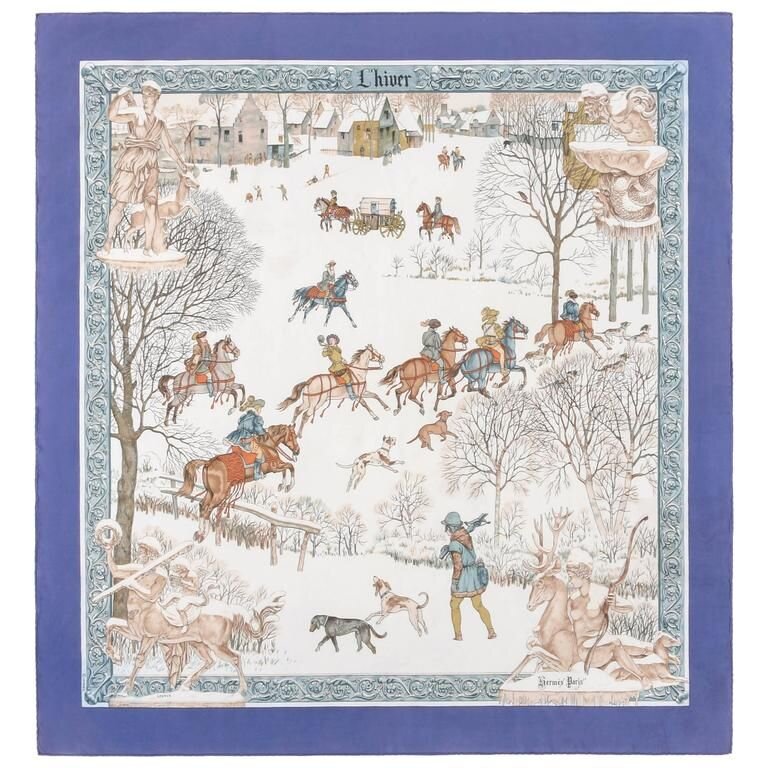
Sources:
[1] Lord Burns, Dr Victoria Edwards, Professor Sir Jon Marsh, Lord Soulsby of Swaffham Prior; Professor Michael Winter (9 June 2000). "The Final Report of the Committee of Inquiry into Hunting with Dogs in England and Wales". Her Majesty's Stationery Office. Archived from the original on 10 April 2009. Retrieved 10 February 2008.
[2] https://www.britannica.com/sports/hunting-sport/Hunting-codes
[3] https://www.fashionmodeldirectory.com/designers/thierry-hermes/
[4] https://www.thefield.co.uk/country-house/clothing/what-to-wear-out-hunting-21368
[5] https://artsandculture.google.com/exhibit/hunting-art-and-tradition/qQLymd5NMTLvLQ
[6] https://www.horseandhound.co.uk/news/bonhams-to-sell-extraordinary-collection-of-hunt-buttons-412082
[7] https://antique-silver.com/early-19th-century-set-of-12-brass-gilt-hunting-buttons-by
[8] https://www.bailyshuntingdirectory.com/bailys-gallery/hunt-button-collecting/page/4/
[9] https://www.thefrickpittsburgh.org/Story-Dressed-to-Kill-A-History-of-British-Sporting-Fashion

